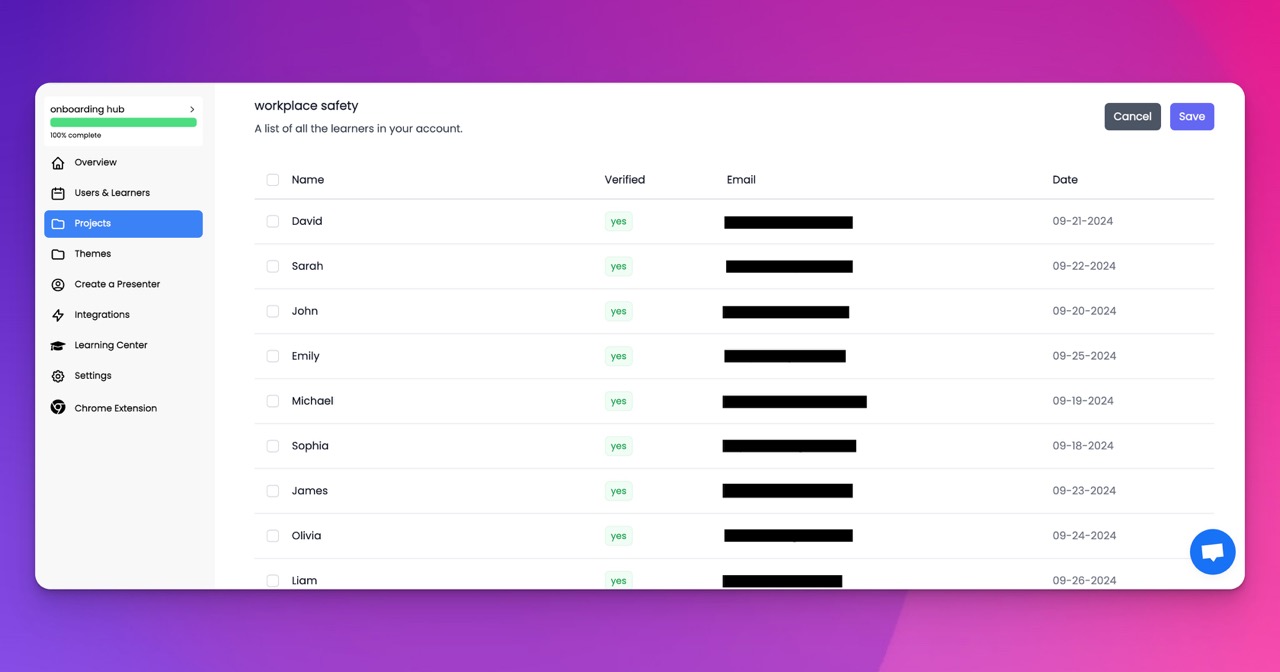🎉 Trainday now integrates with Zendesk and Hubspot 🎉 Trainday now integrates with Zendesk and Hubspot 🎉 Trainday now integrates with Zendesk and Hubspot
🎉 Trainday now integrates with Zendesk and Hubspot
Contact
OSHA Compliance
"Ensuring Workplace Safety: A Comprehensive Guide To OSHA-Compliant Blood Spill Clean-Up Procedures"
# Ensuring Workplace Safety: A Comprehensive Guide to OSHA-Compliant Blood Spill Clean-Up Procedures
In any workplace, ensuring the safety and well-being of employees is paramount. Accidents can happen, and when they involve blood spills, the potential for exposure to bloodborne pathogens becomes a serious concern. The Occupational Safety and Health Administration (OSHA) has established guidelines to protect workers from these risks. This comprehensive guide will walk you through OSHA-compliant procedures for cleaning up blood spills in the workplace.
## Understanding OSHA's Bloodborne Pathogens Standard
OSHA's Bloodborne Pathogens Standard (29 CFR 1910.1030) was created to safeguard workers from health hazards caused by bloodborne pathogens. This standard requires employers to implement an Exposure Control Plan (ECP) that includes measures to reduce or eliminate occupational exposure to blood and other potentially infectious materials (OPIM).
### Key Elements of the Bloodborne Pathogens Standard
1. **Exposure Control Plan (ECP)**: A written plan detailing how the employer will eliminate or minimize employee exposure.
2. **Universal Precautions**: Treating all human blood and OPIM as if they are infectious.
3. **Engineering and Work Practice Controls**: Using tools and practices to minimize exposure risks.
4. **Personal Protective Equipment (PPE)**: Providing appropriate protective gear to employees.
5. **Training**: Educating employees about risks and safe practices.
6. **Hepatitis B Vaccination**: Offering vaccination to employees at risk of exposure.
7. **Post-Exposure Evaluation and Follow-Up**: Procedures for dealing with exposure incidents.
## Steps for OSHA-Compliant Blood Spill Clean-Up
### 1. Preparation
Before an incident occurs, ensure that your workplace has a well-documented ECP in place. All employees should be trained in bloodborne pathogen safety and spill clean-up procedures. Keep a spill kit readily available, equipped with necessary supplies such as gloves, masks, protective eyewear, gowns, absorbent materials, disinfectants, and biohazard bags.
### 2. Assess the Situation
When a blood spill occurs, quickly assess the situation to determine the extent of the spill and whether it's safe to proceed with the clean-up. Ensure that the area is secure and that only trained personnel handle the clean-up process.
### 3. Don Personal Protective Equipment (PPE)
Before starting the clean-up, put on appropriate PPE to protect yourself from exposure. This typically includes disposable gloves, a mask, protective eyewear, and a gown. Double-gloving can provide an extra layer of protection.
### 4. Contain the Spill
Use absorbent materials (such as paper towels or absorbent pads) to contain and soak up the blood. Work from the outer edges of the spill towards the center to prevent spreading the contamination.
### 5. Clean the Area
After absorbing the bulk of the spill, use an appropriate disinfectant to clean the area thoroughly. OSHA recommends using an EPA-registered disinfectant effective against bloodborne pathogens. Follow the manufacturer's instructions for proper dilution and contact time to ensure effective disinfection.
### 6. Proper Disposal
Place all contaminated materials, including used PPE and cleaning supplies, into a biohazard bag. Seal the bag securely and dispose of it according to your workplace's biohazard waste disposal procedures. Never dispose of these materials in regular trash bins.
### 7. Decontaminate and Remove PPE
Carefully remove and dispose of your PPE to avoid self-contamination. Wash your hands thoroughly with soap and water after removing your gloves.
### 8. Report and Document the Incident
Report the spill to your supervisor or designated safety officer, and document the incident according to your workplace's policies. Include details such as the location, time, extent of the spill, and the clean-up procedures followed.
## Post-Exposure Procedures
In the event of exposure to blood or OPIM, follow your workplace's post-exposure evaluation and follow-up procedures immediately. This may include seeking medical evaluation, testing, and receiving prophylactic treatment if necessary.
## Conclusion
Ensuring workplace safety requires a proactive approach to managing potential hazards. By following OSHA-compliant blood spill clean-up procedures, employers can protect their employees from the risks associated with bloodborne pathogens. Regular training, proper equipment, and adherence to established protocols are essential components in maintaining a safe and healthy work environment.
Stay vigilant, stay prepared, and prioritize safety – because every employee deserves a safe workplace.
Accelerate Compliance.
Deliver OSHA-Ready Courses Instantly.
Empower your team with data-driven training solutions tailored to your industry's safety standards. Stay compliant, reduce risks, and boost productivity with AI-powered course creation.
